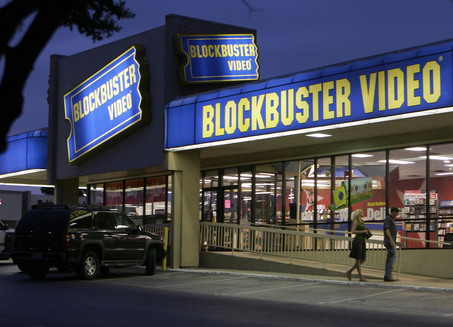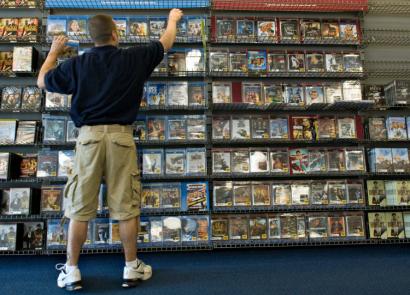
HBO gave BBDO New York the project of creating a memorable campaign. After HBO briefed the ad agency on its specific needs and concerns, BBDO took over the creative aspects of the campaign. In a brainstorming session, Michael Patti, the vice chairman and executive creative director of BBDO, and Don Schneider, the agency’s senior creative director, hit upon a striking concept. The two envisioned a commercial in which a parrot would recite famous movie lines because it saw into a neighboring apartment, where a television was tuned to HBO. The idea quickly evolved into the award-winning spot featuring lip-synching chimpanzees steeped in movie lingo. The 1996 spot, titled ‘‘Chimps,’’ featured renowned primatologist Jane Goodall and a group of wild chimpanzees in the Gombe preserve in Africa. Frame-by-frame animation made it appear as though the chimps were actually speaking famous lines from classic Hollywood movies. The premise of the spot was the powerful impact HBO exerted on its viewers. The commercial opened with a proud chimp uttering lines spoken by Marlon Brando in The Godfather : ‘‘He never could have outfoxed Santino. But I didn’t know until this day that it was Barzini all along.’’
Another chimp replied with lines from Forrest Gump:
‘‘Mama says that stupid is as stupid does.’’ As a third chimp tossed a stick to the ground, he repeated a line from Network:
‘‘I’m mad as hell and I’m not going to take it anymore.’’ A father chimp spoke Darth Vader’s well-known line from Star Wars —‘‘The force is with you, young Skywalker’’—as he patted a small chimp on the head. After a group of chimps chanted, ‘‘Toga! Toga! Toga! Toga! . . .’’ from Animal House, the camera panned to a bewildered Goodall writing in her journal. Her voice-over said, ‘‘September 19: Their inexplicable behavior continues.’’ A chimp then bellowed, ‘‘Yo, Adrian, I did it,’’ a line from Rocky. The camera cut back to Goodall’s cabin, where her television was tuned to HBO, and she continued, ‘‘Got to go now. Braveheart is on.’’ A black screen followed with a graphic and the campaign’s tagline, ‘‘It’s Not T.V. It’s HBO.’’
Producing the spot proved to be quite a challenge, however. The chimpanzees were filmed at their feeding sites in the Gombe preserve. Frame-by-frame animation was then used to create the illusion that the animals were reciting movie lines. Sherri Margulies, a film editor who worked on the spot, told Shoot that, while other commercials had used similar effects, ‘‘the elaborate attention to detail . . . on this spot [was] completely unique.’’ All told, the special effects took approximately 20 to 30 hours per chimp, requiring the ad agency to work around the clock for a month.
In 1997 HBO followed ‘‘Chimps’’ with four new television spots, each intended to elevate the HBO brand. Using tongue-in-cheek humor, the spots attempted to convey the uniqueness of HBO’s programming. In ‘‘Haircuts’’ the men of an idealized American small town sported bizarre, patterned haircuts. It turned out that Carl, the town barber, had become engrossed in HBO’s programming as he cut his customers’ hair, the result being freakish haircuts. In another spot, ‘‘Roach Motel,’’ an enthusiastic pest exterminator was unable to rid a home of its roaches by using sprays or bombs. He succeeded only by luring the cockroaches into a roach ‘‘motel’’ with a neon sign that advertised ‘‘Free HBO.’’ The campaign’s ironic wit continued in a spot featuring a sadistic repairman who tormented an entire town by plugging in and unplugging their cable in the midst of a captivating HBO program. A final commercial, ‘‘Glee Club,’’ related the tale of a disgruntled neighbor who gave the local barbershop quartet free HBO in the hope of distracting them from practicing at all hours. In order to reach the maximum number of potential viewers, HBO aired the commercials during its own programming, on other cable channels, and, most notably, on network television. All five spots ran during prime-time network shows, including top-rated programs such as the 1997 World Series, Seinfeld, Chicago Hope, and ER. The network commercials were intended to reach both current HBO subscribers and those who had either never subscribed or had allowed their subscription to lapse. HBO hoped that the commercials would remind current subscribers of the quality and value of the channel’s programming, while at the same time reaching millions of other viewers who had not signed up for HBO. ‘‘We wanted to inform nonsubscribers of what they are missing,’’ said Parmet. In 1998 the network continued the campaign with two new spots, including one that debuted during a Monday Night Football game. HBO also reported that the spots would be shown on as many as 20 other cable networks. Like the original spots, the new commercials relied on humor and high production values to assure that they would stand out. One spot, ‘‘Guardian Angel,’’ showed a person hit by a falling piano when his guardian angel was distracted by a television in a store window. The mishap was explained by the campaign’s tagline, ‘‘It’s not T.V. It’s HBO.’’ The second spot starred actor George C. Scott serving as the general of an army of germs fighting for control of a television remote. The campaign’s focus shifted in 1999 from the original brand strategy. Although its emphasis remained on the central theme, ‘‘It’s Not T.V. It’s HBO,’’ the advertising spots became focused on marketing specific HBO programming.















